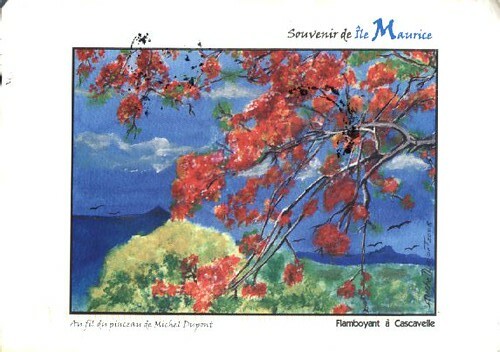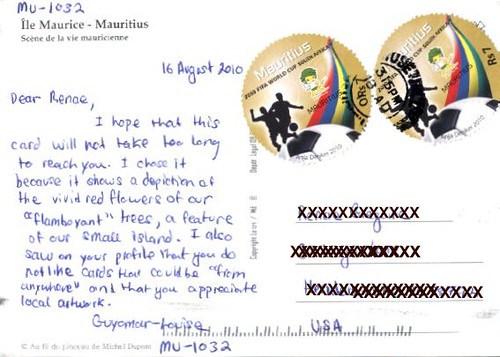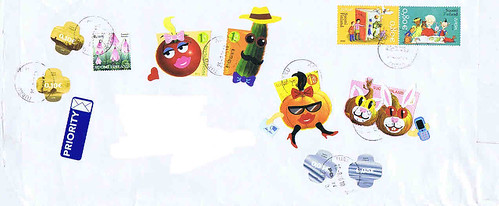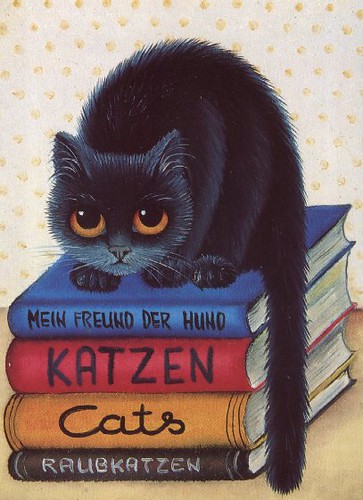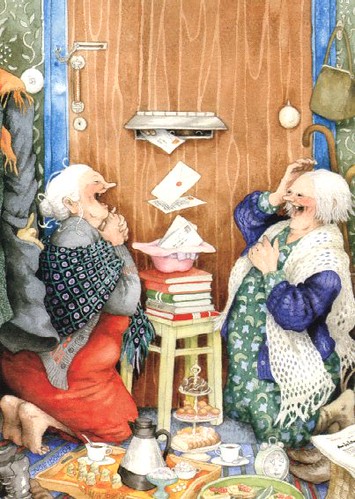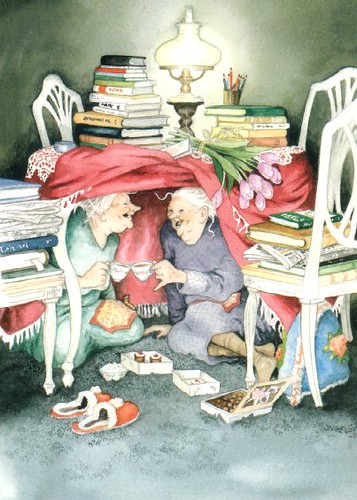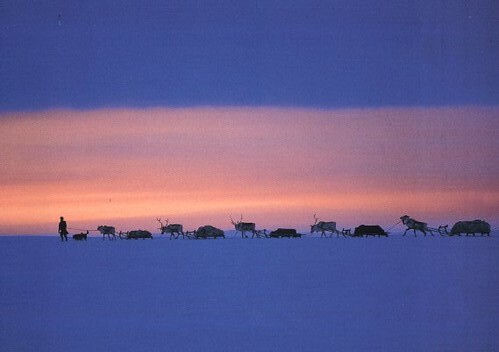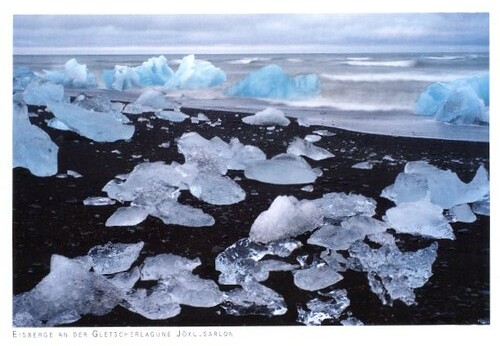Sept1_0002, originally uploaded by CarolinaRen.
A very pretty art card representing a local tree! I love it — all the way from Mauritius, “an island nation off the southeast coast of the African continent in the southwest Indian Ocean, about 900 kilometres (560 mi) east of Madagascar.” [Thanks, Wiki!]

